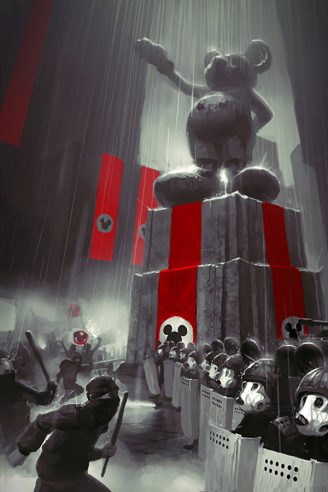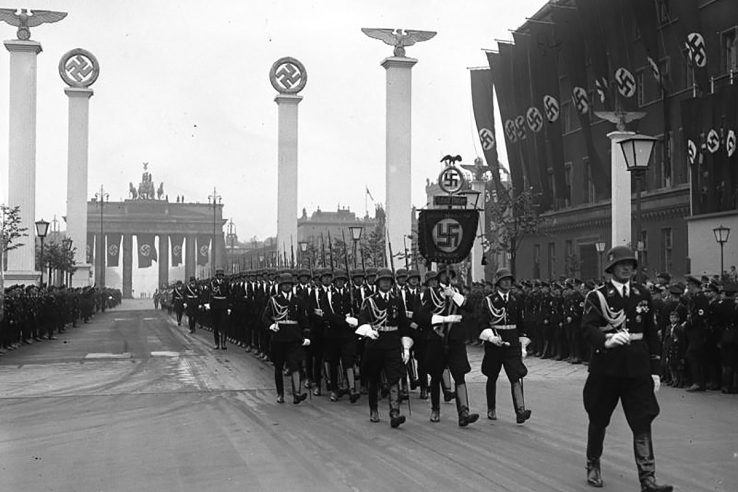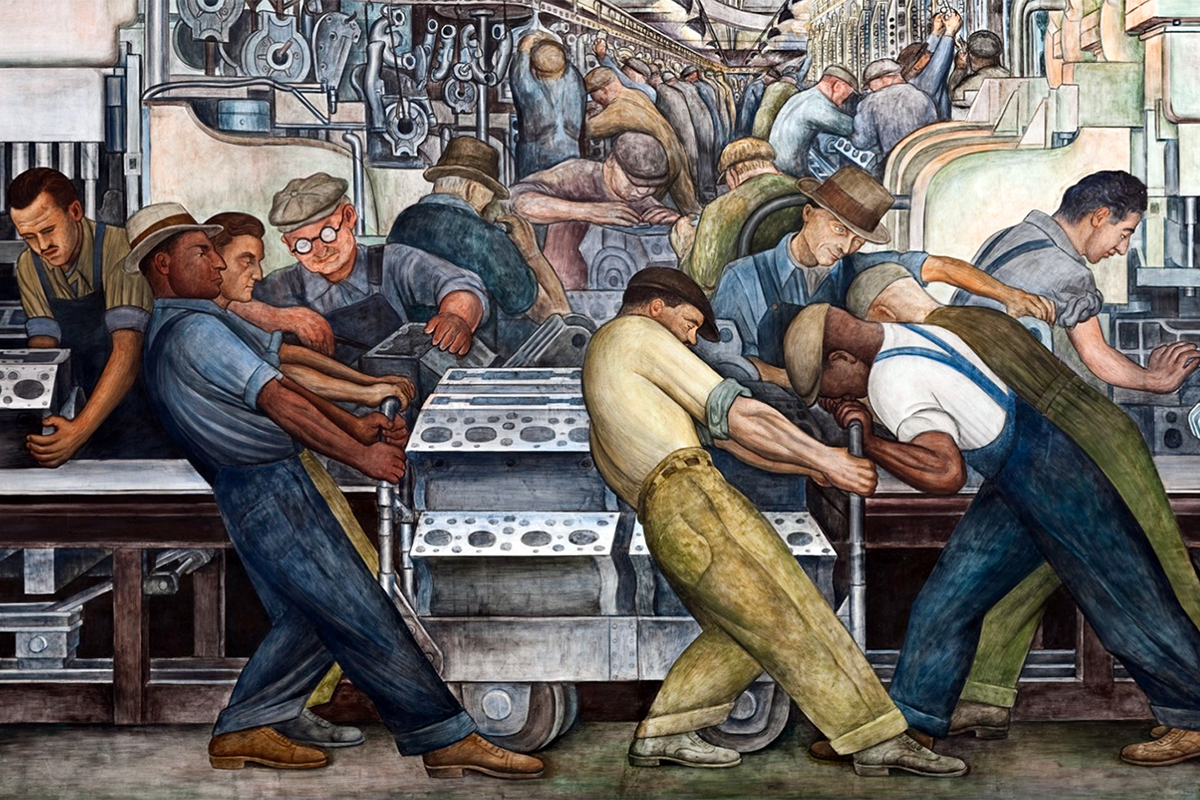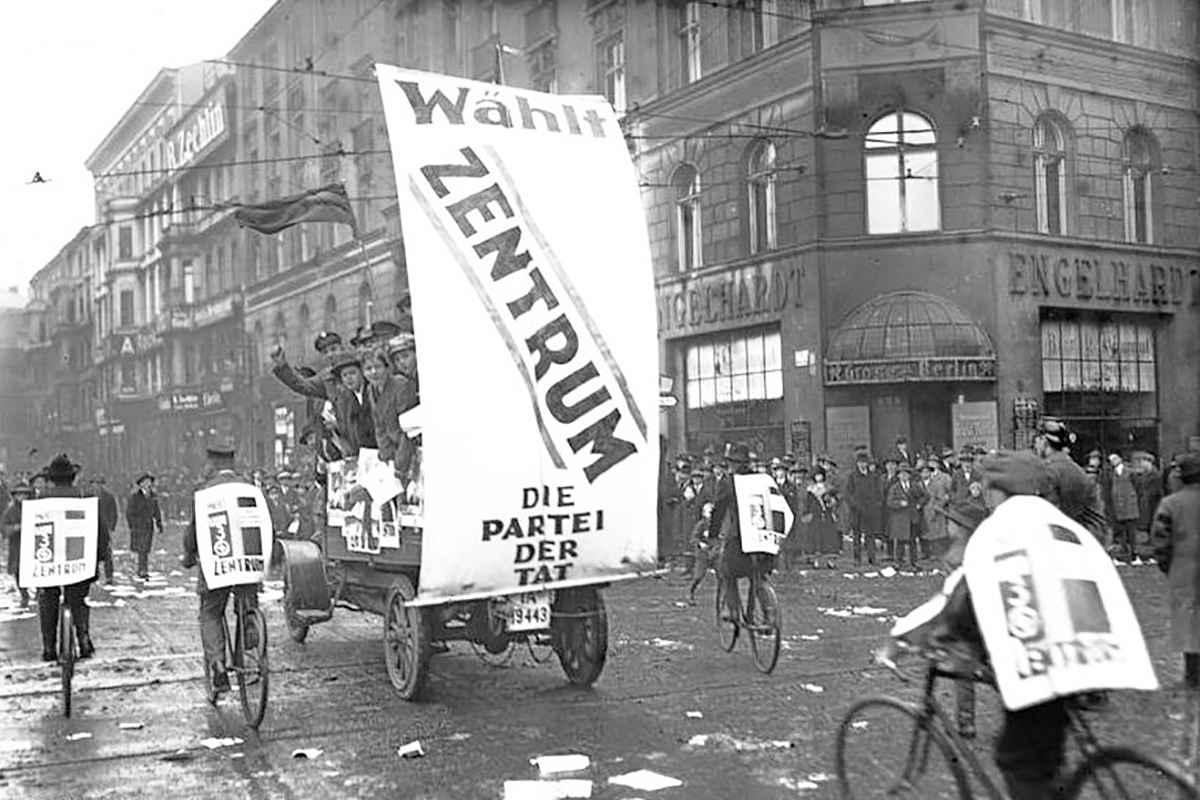If you hang around the dieselpunk crowd long enough, sooner or later you will hear someone retelling an experience about them being called a fascist or Nazi sympathizer because of the way they dress.
Granted, it seems if you are into dieselpunk, you can only go one of two ways: Either you use the Jazz-era American style (civilian and military) or you play with German Interbellum designs, in which case there seems to be no nonuniform option whatsoever (which does not make sense in itself, mind you).
Obviously, the people accusing dieselpunks of being Nazi sympathizers have in all likelihood met dieselpunks of the second variety, i.e., “German” dieselpunks.
There are two questions here:
- If I play with Nazi (or general totalitarian) aesthetics, does that make me a sympathizer?
- What could motivate a nonsympathizer to adopt the style?
The answer to the first question is quite obviously “No”
Wearing something does not make you a sympathizer of anything. There will be some who play with the style because they admire the scum who plunged Europe and the world into the most devastating war mankind has ever known, but I am convinced that they are a minority among us. The others most likely do it for one very simple reason. I know I will draw a lot of flag for this statement, but it is an inconvenient truth: The uniforms from which dieselpunk takes its inspiration look great and have an aura of power bordering on intimidating.

Let me elaborate: Totalitarian regimes in general and Nazi Germany and Stalin’s Soviet Union in particular, got one thing right: branding.
Everything those two regimes put out to represent them, such as propaganda, uniforms and architecture was and still is memorable, powerful and stylish in an intimidating way.
SS and Waffen-SS uniforms in particular have, for lack of a term that is more to the point, badass written all over them.
The branding effect still lasts. It is recognizable even sixty and soon seventy years after the National Socialist regime in Germany collapsed.
A modern example for the still noticeable effect of this branding is German rock and metal band Rammstein. If you ever had the pleasure of attending one of their concerts in the late 1990s, you can not help but realize they were playing with Nazi aesthetics as Hitler’s “court photographer” Leni Riefenstahl depicted them.
This leads me to answer to the second question
There is a certain dark fascination that radiates from totalitarian design and styles that people are attracted to. It is something that spells power and if you partake in it or use part of it, such as uniforms and designs, you, too, can radiate this power.
So to answer why non-sympathizers dress up in a style that is reminiscent of Nazi Germany: it is that those uniforms and the decorum derived from it looks darkly powerful and people like wearing this style.
There is another aspect one should not ignore in this debate
Some of the people you accuse of being Nazi sympathizers because they adopt a certain style of dress may not be sure what you are talking about.
I know this will come as a shock to some of our readers but the memory of the Second World War is fading. Those of us who are in their twenties or older most likely still had the chance to talk to someone who was actually there when it happened. This is not necessarily true for those below twenty and our children will most likely never meet someone who fought in the war.
Many today just see the uniforms in history books or on the Internet and fail to make the connection. To them, it is simply a uniform that is really impressive and that is that.
I have two anecdotes to share which illustrate my point, one is rather appalling, the other one just strange:
In 1989 I participated in a student exchange with a high school in the United States. Fate conspired to put me in history class just in time to indulge in my favorite subject: World War II. Then came the day when June 6, 1944, Operation Overlord, was on the agenda. The following is what happened, almost verbatim. Brace yourselves.
Teacher: “What was the aim of the allied forces invading Normandy?” Several hands go up, teacher picks one.
Pupil: “To beat the Russians out off Germany.”
That was the point when I fell off my chair and rolled over the floor.
The other encounter went like this: While living in Britain, I participated in Second World War reenactment for a while as a member of the Royal Army Medical Corps. During one of the meetups I had a chat with a couple of reenactors portraying a Waffen-SS unit. As it turned out, one of the Waffen-SS guy was Jewish.
These two examples may be a bit extreme but they show that the temporal distance is already having some effect. As I said, some dieselpunks may not be aware of where the uniforms they emulate the style of have come from. Others may be aware but simply do not care because they know they are just going for the style and not the ideology.
So, by all means, do not think dieselpunks are Nazi sympathizers
After all, do you accuse Old West reenactors as being supporters of the slaughter of the Native Americans? Do you accuse people hosting renfaires of being in favor of witch burnings? To single out dieselpunks for scorn based on their dress is not only judgemental and insulting; it means giving all other subcultures settled in historical periods with horrible events a pass while putting the blame on something that is actually based in fiction (dieselpunk, after all, is a fiction genre).
So, leave the dieselpunks alone, they are in it for the looks, not because of the atrocities.
This story first appeared in Gatehouse Gazette 22 (August 2012), p. 22-23, with the headline “Dieselpunk and the Shadow of Nazi Aesthetics”.






